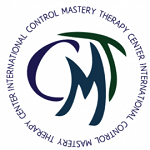- Have any questions?
- 510-612-6392
- infocmtcenter@gmail.com
Once I have begun to create a container, a safe play space, for the dance, I need to INFER my PATIENT’S PLAN.
July 4, 2017EVALUATING my PATIENTS TRAUMAS- in order to develop my patient’s possible plan.
July 4, 2017Training and Supervising Analyst from the Institute of Contemporary Psychoanalysis Robert Stolerow, has called Joe Weiss’ Control Mastery Theory a breath of fresh air in a field dominated by unsupported doctrine, as it is “a experience-near, relational, and rational approach to psychoanalytic therapy that is based on empirical research into the therapeutic process”.
Joe Weiss has said CM is an object relations theory in that it “assumes that the pt develops his problems in relation his first objects and may resolve them in relation to another (how psychotherapy works p203)”.
Joe was a psychoanalyst and very influenced by Freud. In particular in he based his theory on the following four pivotal articles:
1- Freud in 1920 in Beyond the Pleasure Principle wrote about the pts unconscious motivation to master his trauma.
2- In 1926 in Inhibitions, Symptoms, and Anxiety Freud:
- Moved away from having no regard for reality to adapting that there is a perceived danger and threat that induces the patient to develop inhibitions and symptoms in order to remove the himself ( the ego) from the danger.
- Said that therapy provides a playground where the pt. can be free to display and enact all that is hidden – repeating in order to remember.
- Patients use the transference to heal – resolve fears and work through traumas.
- The concept of a pathogenic belief comes from Freud’s explanation of castration anxiety in Inhibitions, Symptoms, and Anxiety as a conviction acquired by inference from experience- the story of little Hans and the horse.
3) Freud further clarified his shift away from the automatic hypothesis in (interpretation of dreams) to the higher mental functioning hypothesis and lastly:
4) In the Outline (1940) :
- Here pts think, judge and determine what actions may be safe or put them in danger. Pts will keep mental contents unconscious until they feel it is safe to bring them forth. Pts attempt experimental actions to determine their safety. Many have continued this line of reasoning including: Kris (1950) , Sandler and Joffe (1969) and Rangell (1966) and Dewald ( 1976)
- Symptoms are no longer understood as simply compromise formations but rather as a way to avoid danger.
- Trauma is seen as a central part of Freud’s new theory of repression. A child is said to condemn inside himself any strivings, which threaten his ties to his parents!
- These beliefs, observations and inferences are the basis of the conscious and unconscious beliefs that are used in daily life.
- The pt works actively therapy to disprove theses beliefs in relation to the therapist
One can now understand that our patients are enacting their past relationships with us, telling me the story of their trauma through how they treat me and how they come to perceive I am treating them with the hope that I will help them to master their past traumas. Our task is to help our patients learn the meaning of these enactments, to help them find the way to understand their symbolizations, to gain insights and help them to find their way back from their internalized realities and digest and metabolize their thoughts and feelings more productively. To find a path to happiness and productive lives. Control Mastery Theory is one therapeutic approach and theory that can help one do this.
